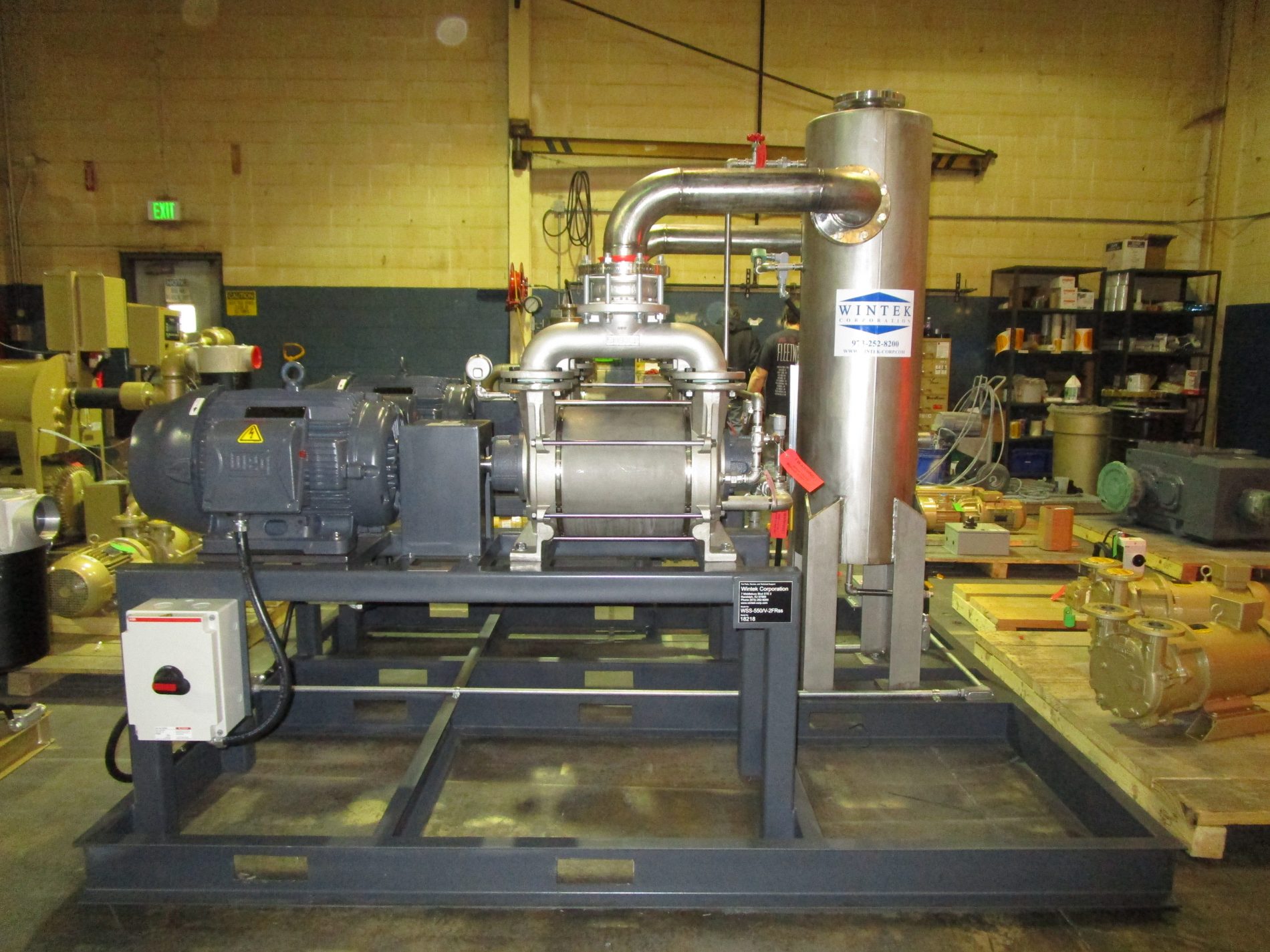Vacuum extrusion is a method of removing volatiles from an extrusion process continuously. Wintek designs vacuum systems for several of the largest vacuum extruder manufacturers in the USA. We sell vacuum systems to large capacity, industrial-scale extruders to smaller, lab-scale extruders indiscriminately.
Why Extruders Need Vacuum
Vented (or two-stage) extruder design includes a “decompression zone.” While most of the extrusion process compresses the polymer, the channel suddenly expands about two-thirds down the screw in vented extrusion. The extra volume in the channel allows any trapped gasses to escape. Furthermore, the vacuum system lowers the pressure exposed to this vent; thus, removing any undesired moisture, air, solvents or reactants from the product. At high temperatures, some polymer melts degrade into volatile organic compounds (VOCs). The vacuum systems Wintek designs remove these volatile compounds from the end-product.
The Liquid Ring Vacuum Pump and Process Carryover
For extruder applications, Wintek recommends the liquid ring vacuum pump because these pumps handle small amounts of solids carryover without issue. In contrast, dry vacuum pumps often clog from accumulating carryover. Repairing these dry pumps can be quite costly. If properly taken care of, liquid ring pumps operate for 10+ years in extrusion applications without issue.
Carryover is always a concern with extruders, so most systems are liquid ring vacuum pumps with inlet filters or inlet knockout pots. Moreover, these filtration elements remove as much of the solids as possible before the process stream enters the pump.
Altogether Wintek designs vacuum systems ranging from simple once-thru, no-recovery to full recovery water liquid ring vacuum systems operating at 20-25″HgV. Depending on the customer requirements, either configuration suffice. Additionally, Wintek often designs more sophisticated, higher vacuum systems.

